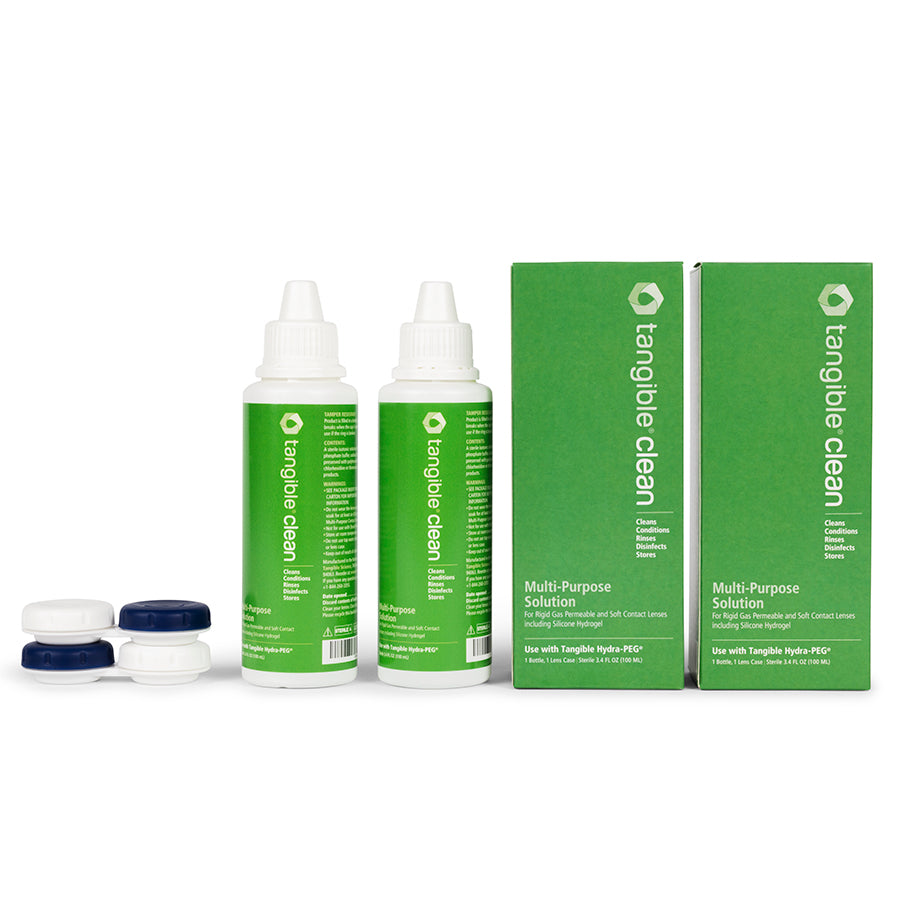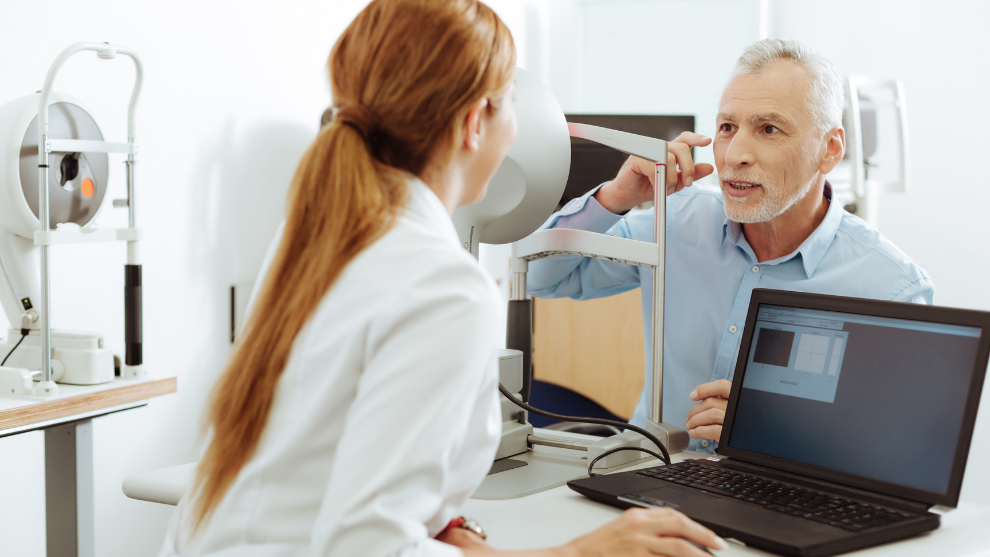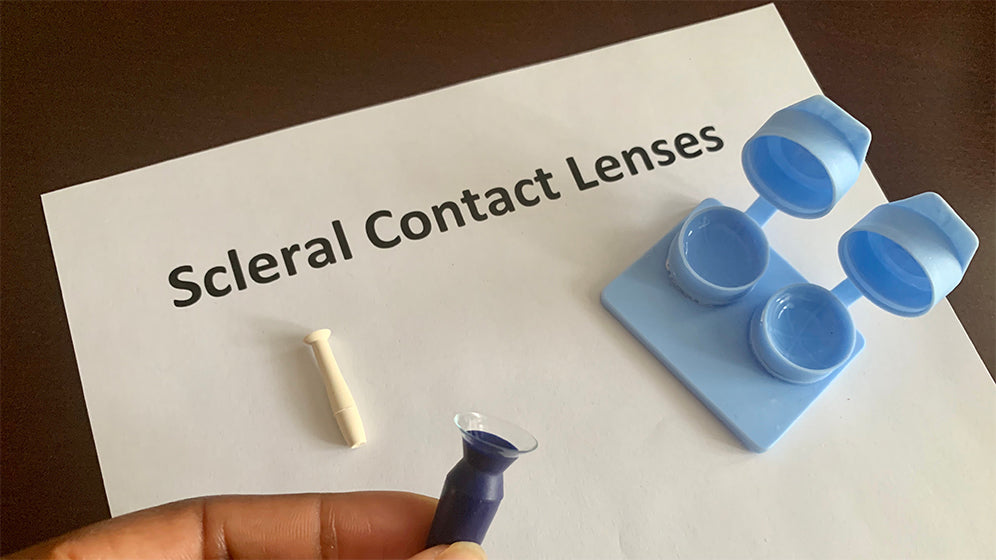Your cart is empty
Already have an account? Log in to check out faster.

We had the opportunity to speak recently with Dr. Chandra Mickles of Nova Southeastern University College of Optometry about a subject she’s passionate about – ensuring that gas permeable lenses that are a “perfect fit” for patients’ vision are also a “perfect fit” in their lives.
Dry eye, which can present alone or with other conditions, such as keratoconus, is pervasive. Dry eye is one of the most common reasons patients visit eye care professionals.
When we hear about issues from scleral lens wearers with dry eye, we usually hear about end of wearing time discomfort and hazy vision. But we also hear about other issues that can impact their quality of life. Patients bring up the annoyance of taking their lenses out frequently to clean them, and remembering to take their solutions with them to work, all the time.
Patients that are new to GP lenses will be quick to comment on issues that affect their comfort and their vision, such as deposits. They will also let us know when lens care is inconvenient for them, such as when frequent mid-day cleanings interfere with their life. All of this is a new experience for them so they are vocal.
On the other side of the spectrum, I have noticed that experienced wearers are less forthcoming with such issues with their lenses. They may have experienced issues earlier in their experience and we would have adjusted their lenses or their care regimen to optimize their experience to the best of our abilities at that time. If they had residual issues, they have resolved themselves to dealing with them and have become accustomed to their “new normal.” They may still be bothered by vision changes during the day, or think it would be nice if their lenses could be more comfortable or they could have more hours of comfortable wear, but they don’t know that there are any options to help them. They are less upfront with any complaints because they believe all the potential solutions have already been tried, and the only solution is to remove their lenses.
However, new technologies have come along in the last couple of years that can significantly reduce lens fogging, and improve comfort and overall quality of life for patients, the Tangible Hydra-PEG surface coating, chief among them. With innovative solutions such as Tangible Hydra-PEG now available, we should educate all contact lens wearers - experienced and new - about this technology that can enhance their contact lens wearing experience in a meaningful way.
In a multicenter study, we found that Tangible Hydra-PEG is an effective technology that can provide superior comfort, improved dry eye symptoms, and reduced lens fogging. We conducted a study of 19 moderate to severe dry eye patients who wore their habitual scleral lenses and scleral lenses with the same parameters coated with Tangible Hydra-PEG for 30 days each, with a one week wash out period in between. The patients with coated lenses improved across almost every measure when compared to their habitual scleral lenses worn uncoated. I presented these findings at the Global Specialty Lens Symposium earlier this year.

We saw statistically significant improvements with the coated lenses in contact lens comfort (CLDEQ-8), dry eye symptoms (OSDI), dry eye signs (tear film break-up time, ocular surface staining, lid wiper epitheliopathy) and conjunctival papillae. Patient-reported improvements in comfortable lens wearing time and frequency of foggy vision were better when wearing the coated lenses.
We also found that 70% of patients removed their lenses less frequently when wearing coated lenses, which may be associated with needing to clean their lenses less frequently, although we did not collect hard data on this.
With these study results in mind, I now automatically order Tangible Hydra-PEG coated lens for all my GP lens wearers with dry eye. This should minimize lens discomfort and vision quality related issues from arising later on, ultimately reducing chair time and the number of lenses ordered.
The key to uncovering patient issues is to ask detailed questions, even if they don’t volunteer, not only with new wearers, but especially with experienced wearers. You don’t want to miss out on helping everyone you can, just because they didn’t bring it up themselves.
Issues typically come up when they are doing high demand visual tasks like driving or near tasks, such as working on the computer or using their mobile devices. Patients will often also notice issues as the day progresses, such as midday fogging.
So, rather than ask general questions about how their lenses are feeling, we should ask these 5 specific questions that take into account how they live their life with their lenses and give us better information, such as:
The answers to these questions may alert us when a patient may be having issues we can easily address, even if the vision correction is good. And by asking these questions proactively, of all our patients – new and experienced GP lens wearers alike – we will be able to help more of them have a better lens wearing experience.

While I do see a great benefit of Tangible Hydra-PEG for my dry eye patients, I’m also seeing that I can improve the lens wearing experience for many of my other patients, including those with irregular and regular corneas, with this breakthrough technology. Really all patients can benefit, because it’s going to improve their comfort and increase wearing time, which can lead to an improved quality of life. Now that I’m recommending coated lenses, I’m seeing less of these issues coming up in my practice.

Dr. Mickles received her optometry degree from SUNY State College of Optometry, graduating in the top ten of her class. She completed a residency in Cornea and Contact lenses at the University of Alabama at Birmingham (UAB) School of Optometry. After her residency, she earned a Master of Science degree in Vision Science from UAB and completed a post-doctoral Optometric Research Fellowship at the Veteran Administration Medical Center in Birmingham, Alabama. Currently, Dr. Mickles is an associate professor and heads Nova Southeastern University College of Optometry’s Dry Eye Care Center. She is also the instructor of record of the NSU College of Optometry’s Contact Lens course and a clinical supervisor in the Contact Lens Service. Dr. Mickles is a fellow of the American Academy of Optometry and the Scleral Lens Education Society. She lectures nationally and has authored several publications, including a chapter in Bennett and Henry’s Clinical Manual of Contact Lenses textbook. Dr. Mickles has been recognized by the Association of Contact Lens Educators with a New Educator award and Nova Southeastern University College of Optometry as a Professor of the Year. In 2018, she was named a “Top Black Educator in South Florida.” Dr. Mickles has also been featured in the Miami Herald, the Sun Sentinel, and ABC News.


If you're experiencing discomfort with your scleral lenses, initiating a discussion with your Eye Care Provider is essential. It may seem... Read more

Now that you have made it home with your scleral lenses, it’s time to care for them. Pretty simple, right?... Read more

Struggling with scleral lens care? You're not alone. This ultimate guide is your one-stop resource for everything you need to... Read more

If you're experiencing discomfort with your scleral lenses, initiating a discussion with your Eye Care Provider is essential. It may seem... Read more

Now that you have made it home with your scleral lenses, it’s time to care for them. Pretty simple, right?... Read more

Struggling with scleral lens care? You're not alone. This ultimate guide is your one-stop resource for everything you need to... Read more
Stay up to date on the top scleral and RGP lens tips from our expert, NCLE certified staff.